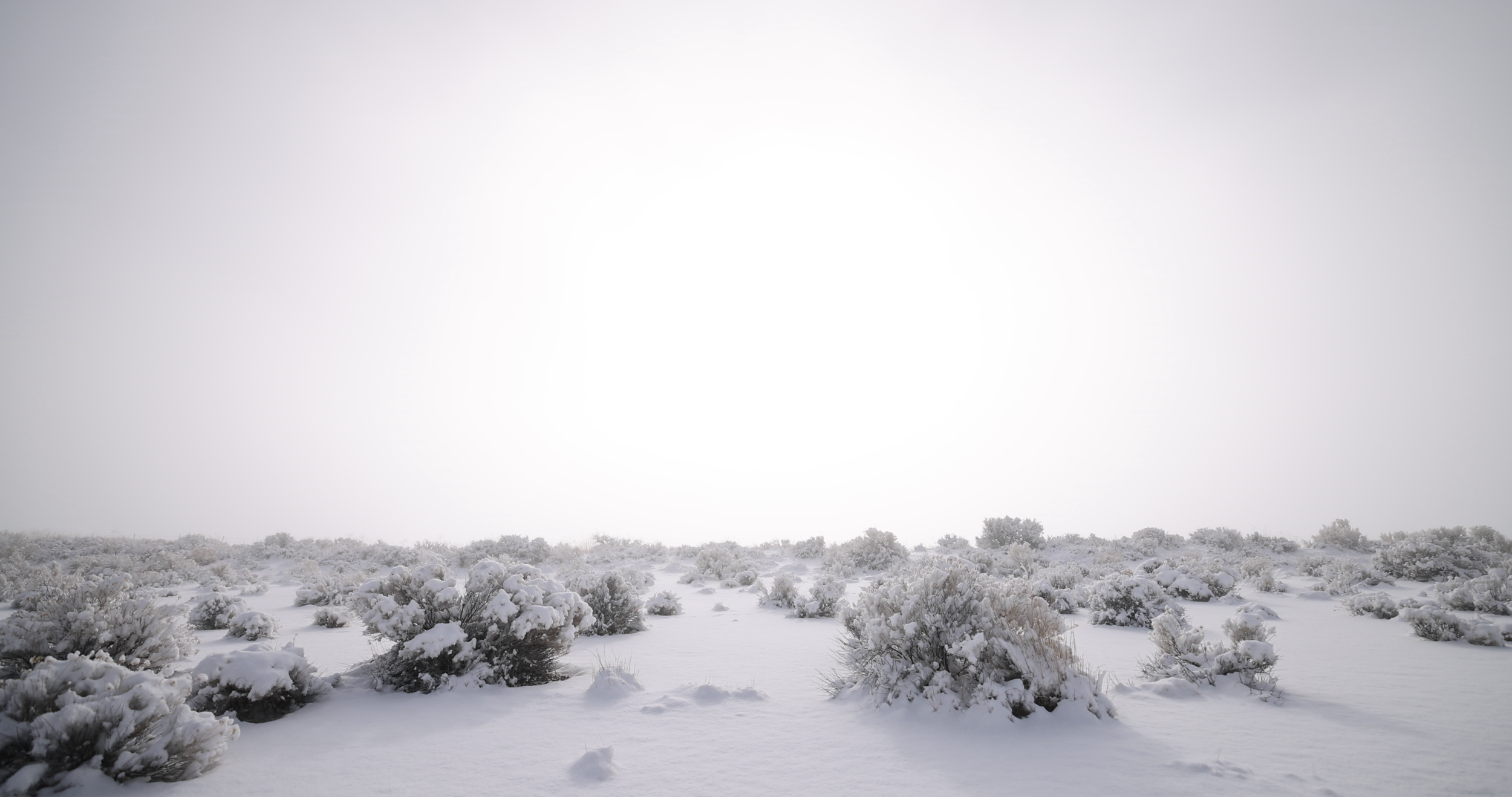Late Night Savage
2021
Two-channel 4K video
12 min 55 sec
Late Night Savage by Wa Liu & Yang Bao focuses on the day and night of three plants at nuclear sites in the United States, the former Soviet Union and China during the Cold War. The two artists embarked on an 11,000-mile journey to conduct field research in Washington State, U.S., and Gansu, China, and lived among the plants. This multi-sensory and ever-evolving soundscape is a gateway, seeking to heighten the audience’s sensuous receptivity to the more-than-human world.
As a symbol for the American West, tumbleweeds, propelled by the force of the wind, travel around to spread radioactive seeds at the nuclear reactor in Washington State. Sunflowers are now planted at Chernobyl, as a cheap corrective method to clean up the contamination. Camel grass at the nuclear city in Gansu, China, embodies the patriotic zeitgeist for dedicating one’s life to the motherland. However, both camel grass and tumbleweeds are invasive species from Russia that disregard land borders, freely traversing the landscapes. Genetic mutation caused by ionizing radiation speeds up the plants’ aging process, leading to an increase in its entropy. While living means fighting a losing battle against nature, the short-lived plants still display incredible resilience and savageness.
The intent of these works is not to anthropomorphize the plants, but to “vegetalize” our human perceptions and question the man-made boundaries amongst ourselves. The artists observe and reimagine the life of plants through video installation, paintings and music. In the daytime, the plants dedicate themselves to fulfilling the obligations assigned by humans, but in the nighttime, they morph into phantoms and savages, dancing till the end of the world.
The silent carnival of these nameless actors has never been alien to us. We are all savages.
午夜魑魅
2021
双频4K影像
12分55秒
《午夜魑魅》由刘娃与鲍杨合作,聚焦于三种植物的日与夜,它们生长于冷战时期美国、前苏联及中国的核基地。两位艺术家经过一万七千公里的长途旅行,在美国华盛顿州和中国甘肃进行实地考察和研究,并与植物共同生活在一起。这个多重感官且无限演变的声音景观构建了一个入口,邀请观众打开感知去体验人以外的世界。
作为美国西部的象征,风滚草在华盛顿州的核反应堆随风迁徙,肆意播撒核辐射的种子。切尔诺贝利种植了大量向日葵,以低成本地净化核泄漏。甘肃核城的骆驼草,象征扎根大西北的奉献精神,而它和风滚草都是俄罗斯的外来物种,无视人为的国界随着水和风去向远方。核辐射导致的基因变异加速了植物的衰老,加快了熵的增加。活着就是必输无疑的抗争,而植物短暂的一生却展现超乎想象的生命力,在混乱中野蛮生长。
此次展览并不意在将植物拟人化,而是希望“植物化”人类的感官, 重新思考人类之间的界限。刘娃与鲍杨通过影像装置、绘画及音乐,追寻和想象植物的生命。白天的植物勤恳而阳光,履行人类所赋予的职责。夜幕降临时,它们幻化成山林中狂放的鬼怪魑魅,在末日前自由舞蹈。
这些无名之辈的无声狂欢与我们别无二致,我们都是魑魅。
© 2021 Wa Liu. All Rights Reserved.








